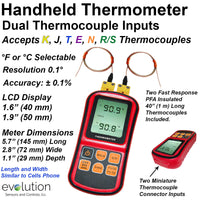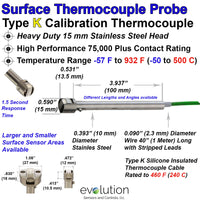RTD Wire and Extension Cable - Items tagged as "3-wire-rtd-pt1000"

RTD wire carries or extends the signal generated by RTD (Resistance Temperature Detectors) and is typical made with copper stranded wire coated with nickel, silver or tin to minimize any additional resistance in temperature measurement signal and withstand diverse application environments
- RTD Wire is different than Thermocouple wire. The RTD wire carries the temperature measurement output where thermocouple wire can transfer and generate a temperature output.
-
Wire Construction is typically 2, 3 or 4 wires in a twisted configuration.

-
A parallel 2 wire design can be used for a flat pass thru and related
applications. Ribbon cables in 3 and 4 wire constructions are also utilized at times with special surface RTD sensors. - Bare wire is typically made with copper stranded wire with a nickel, silver or tin plating to provide protection from corrosion and or enhance a solder connection.
- RTD probe or RTD sensor assemblies Lead Wire is commonly 26 gage stranded (7/34 - 7 strands of 34 gage wire) or 24 gage stranded (7/32 - 7 strands of 32 gage wire).
- 28 gage stranded or smaller diameters can be used to accommodate a space limitation within the RTD assembly itself
- Transmitters, terminal connections or lead wire to instrumentation is typically 24 gage stranded or larger to minimize the lead resistance and provide additional strength.
- Insulation on RTD wire is commonly PFA, PTFE or FEP with capabilities in the range of -328° F to 500°F (-200 to 260°C) and with similar mechanical or electrical properties to Dupont's trade name Teflon type materials.
- Higher Temperature applications use fiber braided materials such as Fiberglass with a 900°F (482°C) and at times the insulation is covered with a Stainless Steel Braid to provide durability.
- Twisted and Shielded wire designs with a ground wire are utilized in applications where electrical interference is a concern.
- PVC (Polyvinyl Chloride) is used at in control room or less harsh environments for potential cost reductions.
View all
1000ft
100ft
10ft
200ft
24-gage-stranded-thermocouple-and-rtd-wire
24s-awg-3-wire-097-inch-dia
25ft
26-gage-rtd-wire-pfa-insulated
26s-awg-2-wire-068-inch-dia
26s-awg-3-wire-contruction-072-inch-dia
26s-awg-4-wire-082-inch-dia
2ft
3-wire-rtd-pt1000
4-wire-pt1000
500ft
50ft
7-strands-of-32-awg-wire
7-strands-of-34-awg-wire
pfa-plastic-fluoropolymer
pt100-3-wire-class-a
pt100-3-wire-class-b
pt100-4-wire-class-a
rtd
RTD-Extension-Wire 26S -AWG-3-Wire-Design- .072"-Diameter
rtd-wire
rtd-wire-24s-awg-3-wire-design-098-diameter
rtd-wire-400-f-rated-fep-insulation
rtd-wire-400F-rated-FEP-insulation
rtd-wire-500f-rated-pfa-insulation
u
uncompensated-nickel-plated-copper-wire
wire-tc-and-rtd
wire-tc-and-rtd-products
-
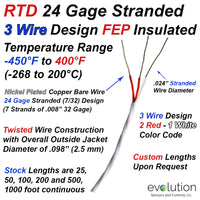 RTD Wire – 3 Wire Design 24 Gage Stranded with FEP Insulation
from $57.00
RTD Wire – 3 Wire Design 24 Gage Stranded with FEP Insulation
from $57.00
-
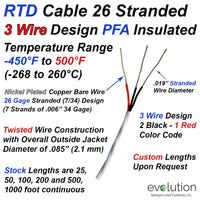 RTD Extension Cable 3-Wire Design 26 Stranded with PFA Insulation
from $36.00
RTD Extension Cable 3-Wire Design 26 Stranded with PFA Insulation
from $36.00
-
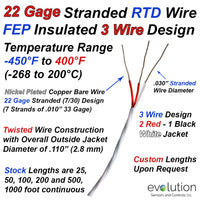 22 Gage Stranded RTD Wire FEP Insulated 3 Wire Design
from $29.00
22 Gage Stranded RTD Wire FEP Insulated 3 Wire Design
from $29.00
-
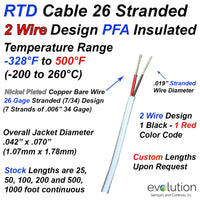 RTD Extension Wire 26 Gage Stranded 2-Wire Parallel Design PFA Insulated
Out of stock
RTD Extension Wire 26 Gage Stranded 2-Wire Parallel Design PFA Insulated
Out of stock
-
 RTD Extension Cable 3-Wire Design 24 Gage Twisted Shielded Stranded with FEP Insulation
from $78.00
RTD Extension Cable 3-Wire Design 24 Gage Twisted Shielded Stranded with FEP Insulation
from $78.00








